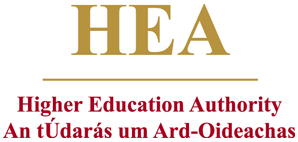Buachaill aimsire Dhonncha Uí Bhriain - Tomás Ó Dálaigh
Recording: [Download audio file]
[Download AIFF audio file (of processed ‘user’ version)]
[Download AIFF audio file (of archive version)]
Transcript
Bhí buachaill aimsire ann fadó ag caitheamh a shaoil ag tuilleamh ó am go ham gach bliain. Fé dheireadh do bhí sé lá áirithe ag déanamh trinse i dtalamh (chun go) scaoilfeadh an t-uisce as. Agus do (ghoill) an lá go mór air. Agus dúirt sé nuair a dh'fhéach sé thairis ar an ghréin:
"Brón ort, a ghrian," arsa eisean,
"(Murar) maith í do thriall
Ní rabhais-se riamh in aimsir.
Dá gcaithfeá-sa bliain
Le Donncha Ó Briain" - b'in é ainm an mháistire -
"Rachfá-sa siar ar (chea)(...)."
Translation
There lived a servant boy long ago who spent his life earning from time to time every year. In the end he was one day digging a trench in the ground so that (?) the water would drain from it. And the day (...) him immensely. And he said as he looked up at the sun:
"Sorrow on you, sun," he said,
"If your journey is not good (?),
You were never in service.
If you spent a year
With Donncha Ó Briain" – that was the master's name -
"You would go back to (...).
Commentary
The 'cante fable' in folkloristic terms is a narrative that contains alternating prose and verse. A very popular variation of this type of story is known as a stave anecdote, whereby there is a verse at the end of a prose narrative that sums up or concludes the events, often in a clever way. They are very popular in Gaelic tradition, and usually concern poets or extempore composition of verse. See Donald Haase (ed.), The Greenwood encyclopedia of folktales and fairytales (3 vols, Westport, Ct., 2008), vol. 1, 158.
This fragmented stave anecdote is clearly related to another story in the Doegen collection, namely 'Buachaill aimsire cortha dá bheatha'. The current example only forms the beginning of the narrative, which is an Irish version of an international folktale, ATU 1416 The mouse in the silver jug. See Hans Jorg Uther, The types of international folktales: a classification and bibliography (3 vols, Helsinki, 2004). In the international versions, it is a couple who bemoan their lifestyle, and curse Adam and Eve. A rich patron offers them a life of luxury, as long as they do not open a certain vessel. They succumb to temptation, however, and a mouse or bird flies out of the vessel upon opening. The story contains the central motif entitled C324 Tabu: looking into jug and H1554.1 Test of curiosity: mouse in jug. See Stith Thompson, Motif-index of folk literature (rev. and enlarged ed., 6 vols, Bloomington, Ind., 1955-8). These motifs are central to a common Irish variant of the same story, whereby a holy person demands that no one open a vessel, and upon violation of this command, mice or rats emerge. It is used as an aetiological tale to explain the origin of mice or rats, and is often found in association with St Martin of Tours. See Seán Ó Súilleabháin and Rieder Th. Christiansen, The types of the Irish folktale (Helsinki, 1968).
Title in English: Denis O'Brien's servant-boy
Digital version published by: Doegen Records Web Project, Royal Irish Academy
Description of the Recording:
Speaker:
Tomás
Ó Dálaigh from Co.
Kerry
Person who made the recording:
Wilhelm Doegen
Organizer and administrator of the recording scheme: The Royal Irish Academy
In collaboration with: Lautabteilung, Preußische Staatsbibliothek (now Lautarchiv,
Humboldt-Universität zu Berlin)
Recorded on 13-09-1928 at 17:05:00 in Convent
of Mercy, Killarney (office). Recorded on 13-09-1928 at 17:05:00 in Convent
of Mercy, Killarney (office).
Archive recording (ID LA_1089d2, from a shellac disk stored at the
Royal Irish Academy) is 00:37 minutes
long. Archive recording (ID LA_1089d2, from a shellac disk stored at the
Royal Irish Academy) is 00:37 minutes
long.
User recording (ID LA_1089d2, from a shellac disk stored at the Royal
Irish Academy) is 00:35 minutes long. User recording (ID LA_1089d2, from a shellac disk stored at the Royal
Irish Academy) is 00:35 minutes long.





